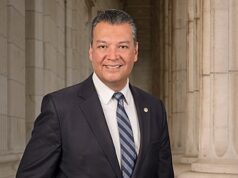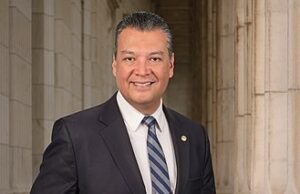EPA backs Utah’s plan to improve water quality with $15.6 million in water infrastructure funding
DENVER (November 30, 2017) – (RealEstateRama) — The U.S. Environmental Protection Agency (EPA) has awarded Utah approximately $15.6 million for clean water and drinking water projects in communities across the state. EPA is providing $7 million for the state’s clean water revolving loan fund and $8.6 million for its drinking water revolving loan fund to support key infrastructure projects, including new and upgraded wastewater and drinking water plants. These projects will ensure clean drinking and surface water, better serve residents, increase efficiency and reduce pollution.

“Helping our states invest in clean water infrastructure is one of EPA’s biggest priorities,” said EPA Regional Administrator Doug Benevento. “These projects will ensure that Utah’s communities are providing clean and safe water to those who live in and visit the state for years to come.”
“Many Utah communities rely on the financing provided through the State Revolving Fund to modernize water infrastructure that supports growth, innovation, and water quality improvements around the state,” said Erica Gaddis, Water Quality Division Director, UDEQ. “Most recently the SRF has been used to fund improvements in wastewater infrastructure to remove nutrients from wastewater to protect Utah’s waters.”
In addition to the $15.6 million just funded, Utah’s water infrastructure projects are also funded with state match, repayments from prior SRF loans, and interest earnings.
Projects targeted for wastewater treatment as well as safe drinking water SRF loans include:
- $70 million to replace the regional wastewater treatment plant in Logan City with modern, efficient, and sustainable technology. These new facilities will provide affordable, safe wastewater treatment for Logan and six surrounding communities, supporting growth and development and protecting many important uses of Cutler Reservoir.
- $29 million for a South Davis Sewer District project to implement innovative treatment technology for the removal of nutrients from wastewater and the conversion of waste byproducts to energy and nutrient-rich soil amendments. The District will use $2,500,000 of the funding award to support nonpoint source pollution prevention projects within the Great Salt Lake watershed.
- $13 million for a Salem City project to construct new wastewater treatment facilities and provide safe and cost-effective sewer services for the City’s population and businesses.
- $14.2 million to replace Moab City’s 50-year old wastewater treatment infrastructure with modern, energy-efficient technology that is designed to provide regional services to Grand and San Juan Counties, including managing hauled waste from the National and State Parks and lands that make the area a world-renowned recreational and tourist destination.
- $3.2 million for a project in Roosevelt City to extend sewer services to a neighboring community and relieve public health risks that resulted from failing septic tanks and polluted groundwater.
- $2.65 million for Duchesne City to rehabilitate its sewer lagoon system, protecting and extending its service life for an additional 30 years.
- $7.4 million for a new surface water treatment plant in Springdale.
- $1.7 million to connect to the Stansbury Park Improvement District in West Erda including installation of 5,800 feet of new water line, 34 fire hydrants and valves, 53 service connections and meters with 9,200 feet of new connection line.
- $1.2 million in Glen Canyon to refurbish an existing storage tank, add a standby power generator and fuel tank, and install a remote read meter, data collection equipment, and new distribution line.
- $1 million in Rocky Ridge for a new well, 2,700 feet of transmission lines, and a building for the well and chlorination system.
- $555k in Corinne City for a Radium-228 filtration system, spring rehabilitation, and 1,100 feet of spring line.
- $474k for a new water tank installation in Irontown and 2,800 feet of transmission lines.
The Clean Water State Revolving Fund (CWSRF) program is a federal-state partnership that provides communities a permanent, independent source of low-cost financing for a wide range of water quality infrastructure projects. The CWSRF program provides low interest loans for the construction of wastewater treatment facilities and other projects vital to protecting and improving water quality in rivers, lakes and streams for drinking water, recreation and natural habitat. The loans help communities keep water and sewer rates more affordable while addressing local water quality problems. https://www.epa.gov/cwsrf
The Drinking Water State Revolving Fund (DWSRF) program is a federal-state partnership to help ensure safe drinking water. Created by the 1996 Amendments to the Safe Drinking Water Act (SDWA) the program provides financial support to water systems and to state safe water programs.
https://www.epa.gov/drinkingwatersrf
Contact Information:
Lisa McClain-Vanderpool ()
303-312-6077














